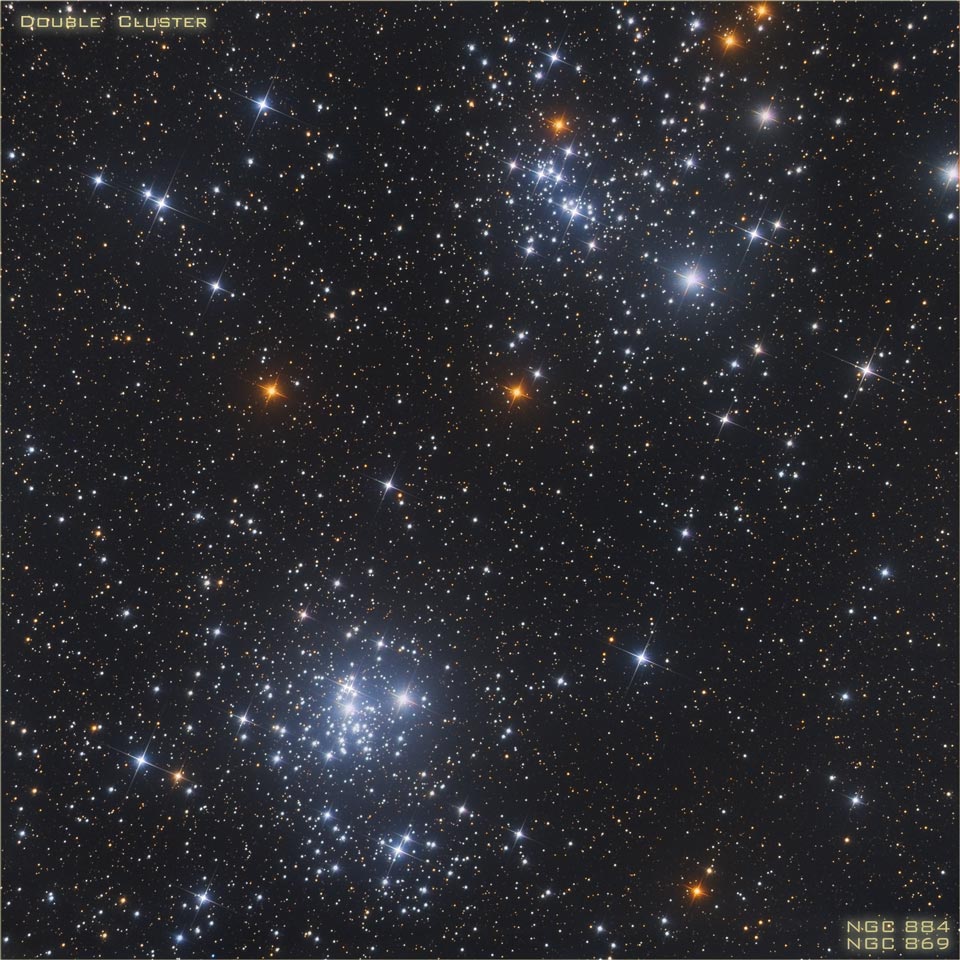JANUARY 1, 2013
A Double Star Cluster
EXPLANATION
Few star clusters are seen to be so close to each other. Some 7,000 light-years away, though, this pair of open or galactic star clusters is an easy binocular target, a lovely starfield in the northern constellation Perseus. Also visible to the unaided eye from dark sky areas, it was cataloged in 130 BC by Greek astronomer Hipparchus. Now known as h and chi Persei, or NGC 869 (above right) and NGC 884, the clusters themselves are separated by only a few hundred light-years and contain stars much younger and hotter than the Sun. In addition to being physically close together, the clusters' ages based on their individual stars are similar—evidence that both clusters were likely a product of the same star-forming region.
Image Credit & Copyright
F. Antonucci, M. Angelini, & F. Tagliani, ADARA Astrobrallo


